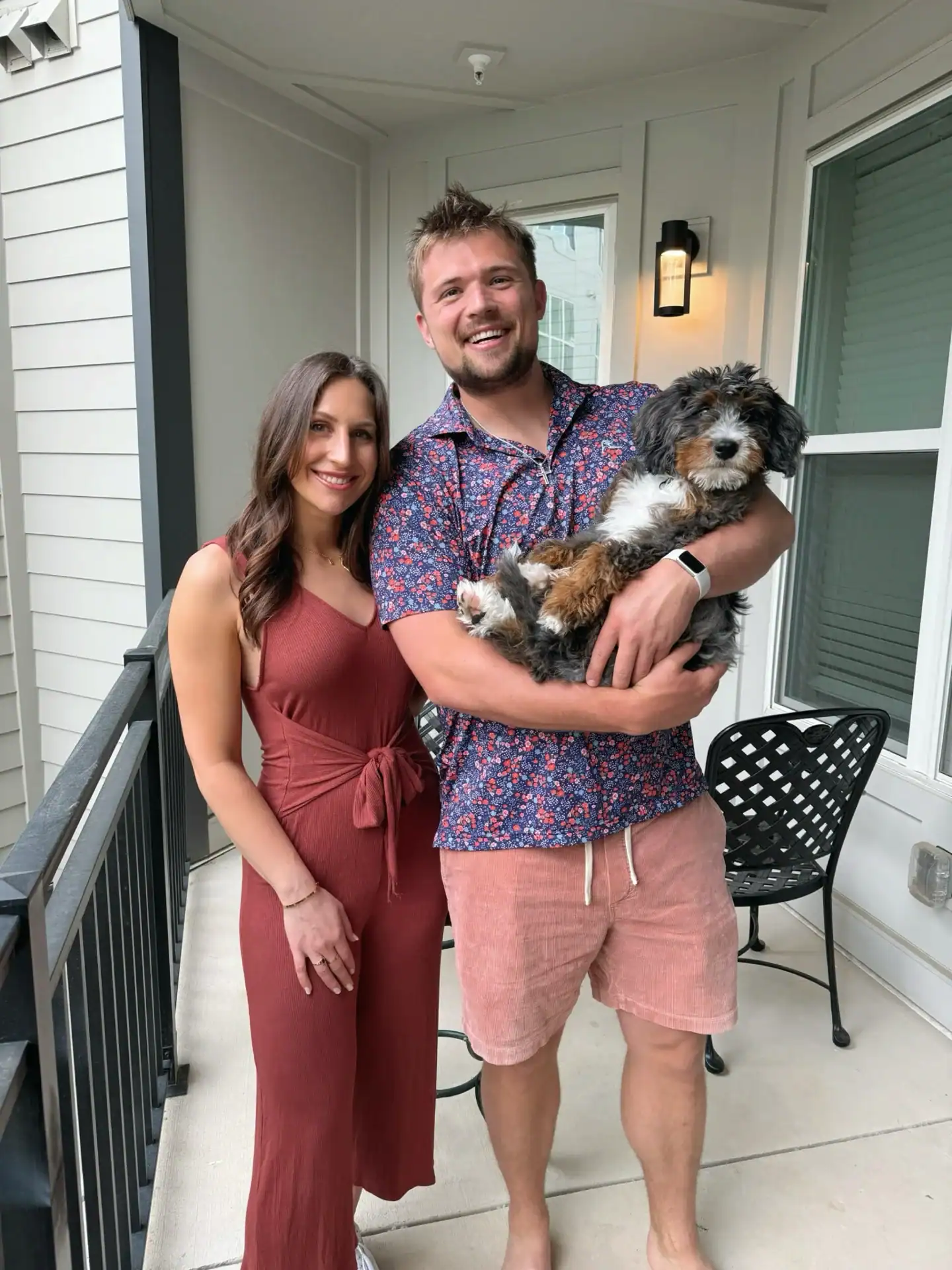Wondering if an F1 or an F1b Bernedoodle makes a big difference for allergies or shedding? Here’s exactly what those labels mean.
What exactly are puppy generations?
When families first start looking for a doodle puppy—whether Goldendoodle or Bernedoodle—they’re suddenly hit with terms like “F1,” “F1b,” “Multi-Gen,” and even “Ultra.” If you’re scratching your head thinking, “What on earth does this all mean?” This guide is for you.
I’ve been in the dog breeding world for over a decade, actively raising and caring for Bernedoodles and Goldendoodles, and I’ve found that understanding these generation types helps families confidently pick the right puppy.
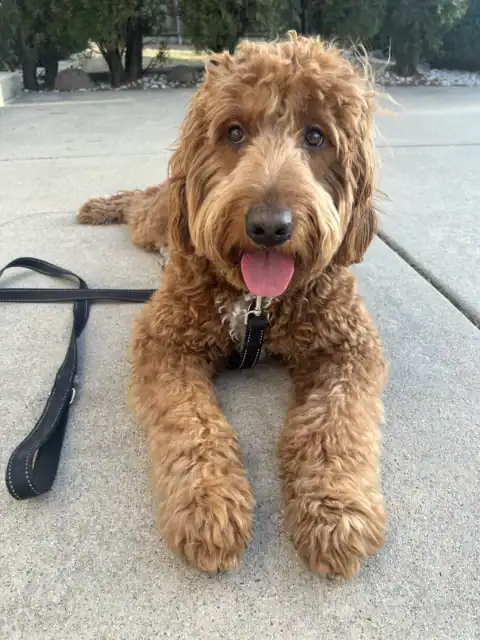
Understanding common Bernedoodle and Goldendoodle generations
Here are the most common generations you’ll encounter and what exactly they mean:
F1 (First-generation)
This means one parent is a purebred Poodle and the other is a purebred Bernese Mountain Dog (for Bernedoodles) or Golden Retriever (for Goldendoodles). F1 puppies are 50/50 split between the two breeds, typically resulting in puppies with a consistent wavy coat.
F1b (First-generation backcross)
F1b is when you breed an F1 with a purebred Poodle. These puppies will be around 75% Poodle. Because of the higher Poodle percentage, F1b pups usually have curlier coats and lower shedding. Ideal if allergies are a concern.
F1 Ultra (First-generation Ultra)
The term “Ultra” signifies that a Bernese Mountain Dog has been bred with a Bernedoodle. The result? Puppies with a higher percentage of Bernese characteristics. Perfect if you’re looking for more Bernese traits—such as coat, markings, or temperament.
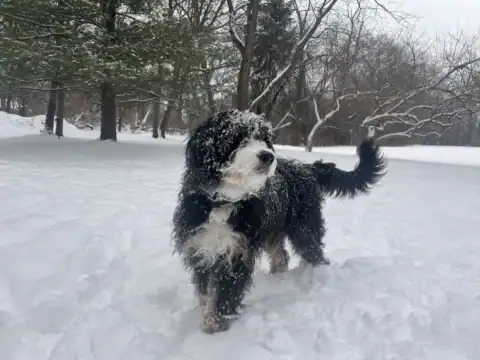
Multi-Gen (Multi-generational)
These puppies have Bernedoodle parents from different generations—for example, an F1 bred with an F1b. Multi-Gen puppies vary a bit more in their coat type: you’ll find curly, wavy, and even a few straighter coats. People choose Multi-Gen puppies because they offer a greater variety and often lower shedding.

Which generation sheds the least?
If minimizing shedding and dealing with allergy issues is top priority, your best bets are:
- F1b puppies
- Multi-Gen puppies
These puppies commonly present the lowest shedding due to a higher percentage of Poodle genes.
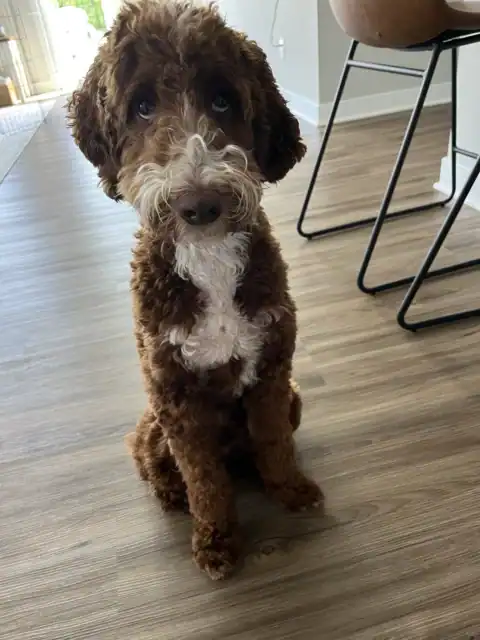
What’s the most popular generation?
I’ve noticed clear trends based on my experience breeding puppies over the past decade:
- Goldendoodles: The popularity seems evenly split between F1 and F1b. Families love the classic F1 mix, but F1b puppies often have the edge if they’re concerned about allergies.
- Bernedoodles: Multi-Gen and Ultra Bernedoodles have surged in popularity recently. Families love the consistent temperaments, more predictable non-shedding coats, and the ability to select a puppy best matching their lifestyle.
Should families care about complete generation histories?
It’s a common misconception that you should always require detailed pedigrees of your doodle puppies. In my extensive experience in the doodle community, this isn’t necessarily true. Complete pedigree histories are usually more relevant for purebred dogs that will compete in shows or be bred later—not for family pets.
Most of my families rarely, if ever, ask for extended lineage or pedigree history. Occasionally, a customer will request parent information or DNA testing to confirm breed purity—that’s completely normal. DNA tests can occasionally show strange results, like a tiny percent of Bichon mixed in, simply because genetic gene pools can overlap. It’s nothing to worry about and fairly common in doodles.
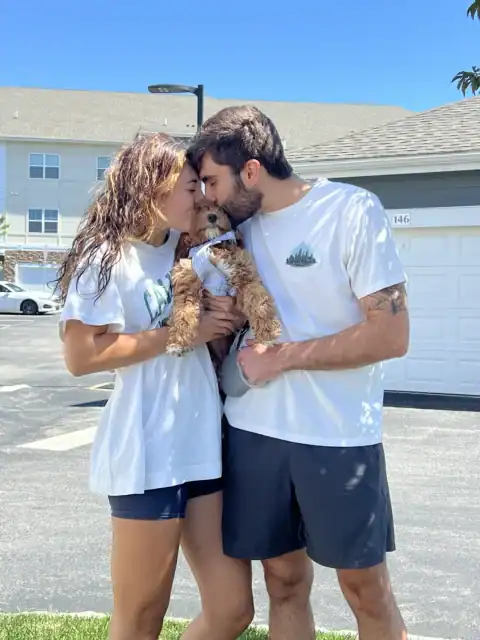
Anything unhealthy to avoid by generation?
We’ve consistently found no significant difference in health based on specific doodle generations. Properly bred, health-tested puppies across any generation tend to be equally healthy. The key lies in responsible breeding.
However, families looking for predictability should generally avoid F2 or F3 generations (offspring of two F1 or two F2 doodles). Those generations can sometimes produce “unfurnished” puppies—dogs without the classic doodle facial furnishings (beard, fluffy eyebrows, etc.). Though still adorable, they may shed more and appear distinct from what most families expect from a doodle breed.
How do we ensure healthy, non-inbred dogs?
We practice careful line selection by introducing outside genetics regularly and carefully checking each dog’s background. Mixing up parents helps assure healthier puppies and reduce potential genetic concernsWhat should families ask when picking their puppy?
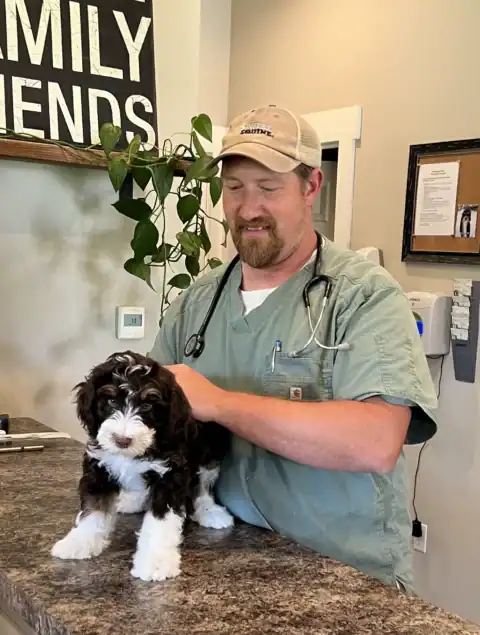
I tell all my families: if you’re particular about coat type or have allergy concerns, ask about coat characteristics upfront—wavy, curly, shedding, lineup percentages, and generation types.
If allergies matter, always aim for F1b or Multi-Gen. But no matter the generation, remember that Bernedoodles and Goldendoodles are famously wonderful with families, great with kids, and make loyal, sweet-tempered companions.
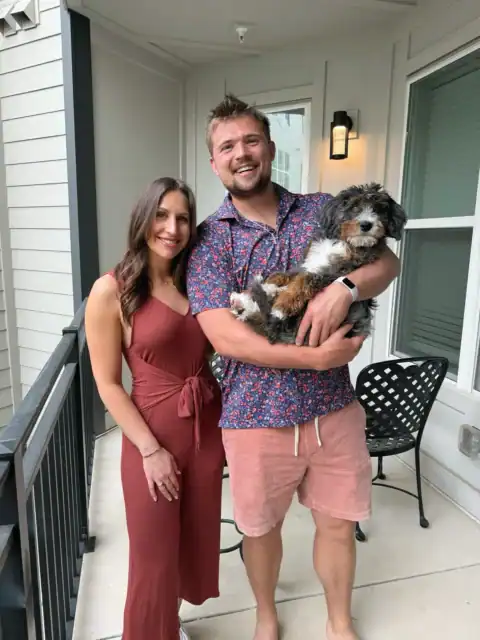
Final thoughts
Don’t stress about full pedigrees or past lineage unless planning advanced breeding or a competitive show career. Instead, focus directly on health testing, coat features, and your exact family needs. It simplifies your choice and ensures a happy match for life!

